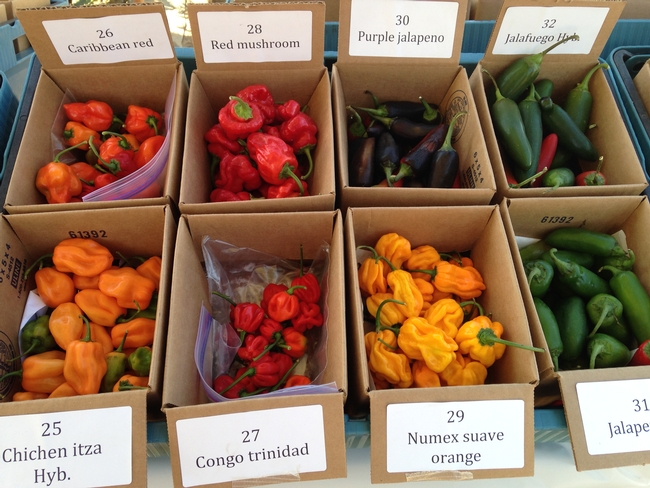Pests make it challenging to grow chile peppers
Ethiopian, Mexican and Thai cuisine all taste distinctly different, but they have something in common: chile peppers. Demand for chile peppers is growing steadily and California is a leading producer of the vegetable that adds spice to life. Cash receipts for California chile peppers increased from $59 million in 2010 to nearly $100 million in 2012, according to USDA statistics. In Santa Clara County, 70 varieties of peppers are grown. Peppers are challenging to grow because they are susceptible to diseases, many of them spread by insects.
“Tomato spotted wilt virus spread by western flower thrips is a big problem for peppers,” said Shimat Joseph, UC Cooperative Extension advisor in Monterey, Santa Cruz and San Benito counties. Tomato spotted wilt can cause a plant to produce discolored fruit that is unmarketable and it can kill the plant. Joseph advises pepper growers on integrated pest management methods to control insects.
“We believe it is critical to manage thrips early in the season because when the plants are small, they are more vulnerable,” Joseph said, “and the disease may not show until later in the season.”
He is currently studying the effects of applying insecticides a month after transplanting to discourage thrips from feeding. He also recommends removing weeds, which can host the virus.




Posted by recbecca - foodflav on November 16, 2014 at 4:50 AM